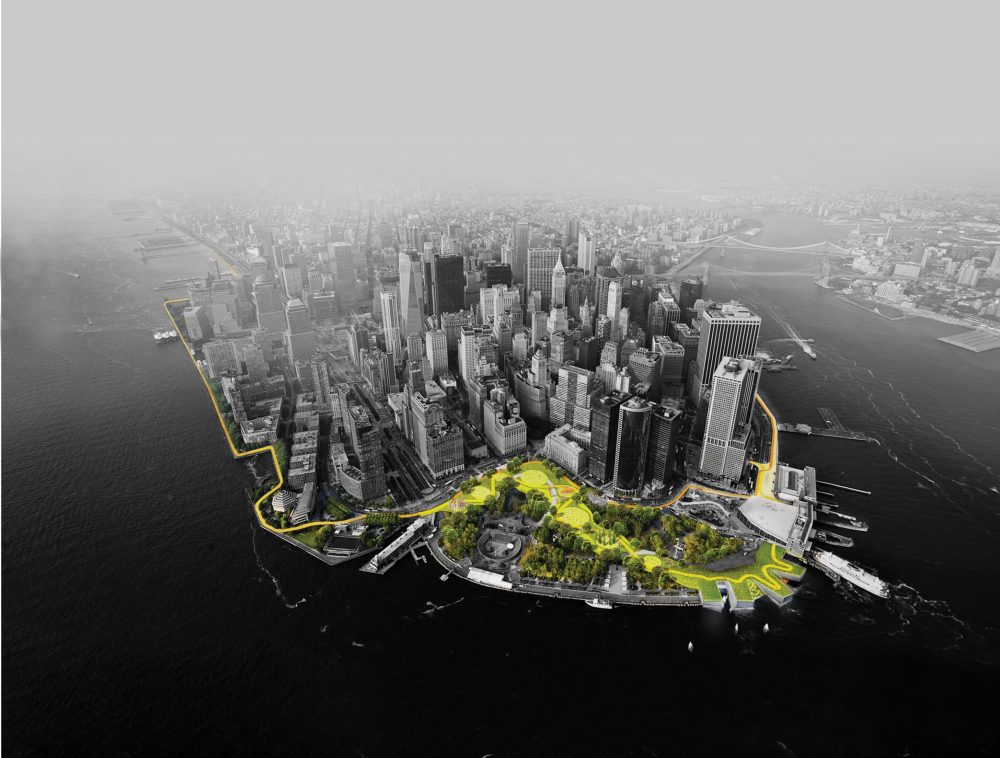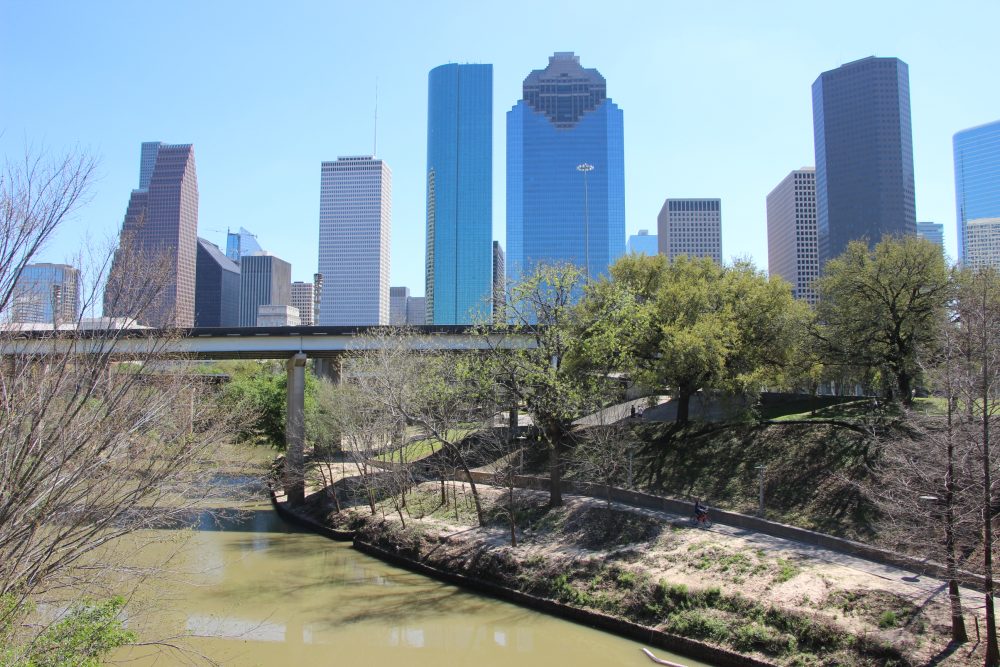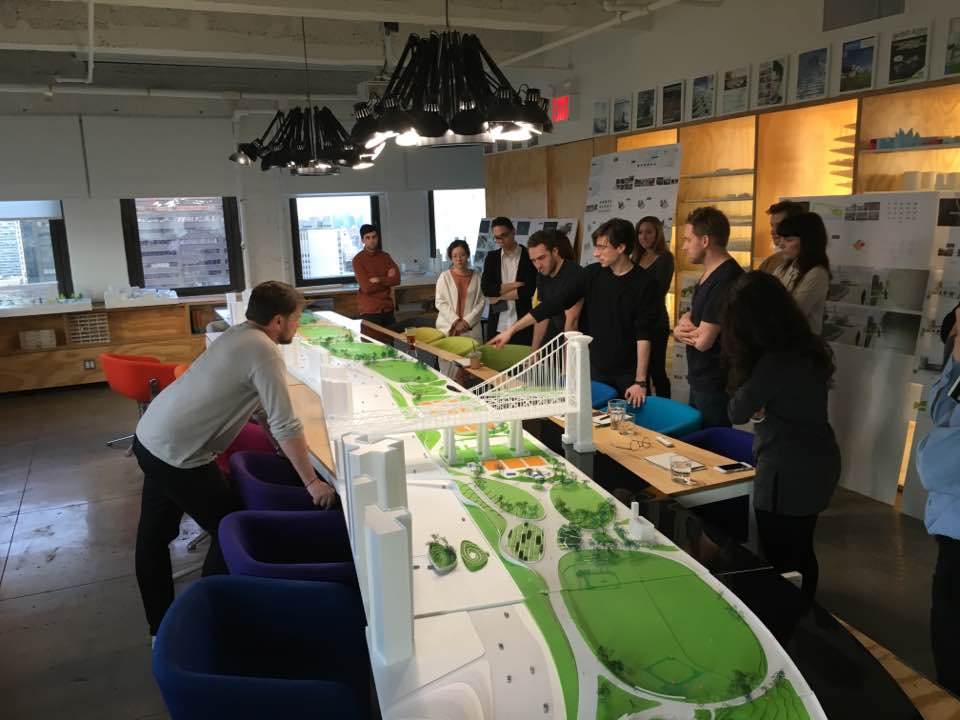
Listen
The impact of Hurricane Harvey served as a catalyst to rethink how Houston lives with flooding. But, can resilient design and protective infrastructure also be aesthetically pleasing? Or even become a city's attraction?
Hurricane Harvey dumped approximately 30,000 cubic yards of silt onto Buffalo Bayou Park; that's comparable to about nine Olympic-sized swimming pools. It uprooted hundreds of the park’s trees, and its floodwaters even reached a record 38.7 feet, at the Shepherd Drive Bridge.
The Buffalo Bayou Partnership said it will cost approximately $2 million to fully recover. Still, landscape architect Scott McCready, of design firm SWA, said designers are generally happy with how the park fares during flooding events. After all, it was redesigned to handle them.
"We designed flood benches on the inside bends of the river. Basically, low lying flat areas, where silt would naturally drop out during storm. To kind of concentrate that, so it didn't concentrate on other places, like trails," McCready said. "And we had all of our higher value investments— playgrounds, plazas, building architecture— all at a higher elevation, so they weren't as impacted by the floods."
He said there are examples of successes and challenges all across the bayou, after the park endured Hurricane Harvey’s floodwaters. The Johnny Steele Dog Park has still not reopened, and there's talk of moving some of the lowest trails further away from the banks. But, in the end, McCready said the park is an example of how developing the bayou as an engaging community space is something to be celebrated.
"It’s a huge opportunity for Houstonians to engage with the bayou, which is a really beautiful, natural feature,” said McCready. “You have all sorts of opportunities. Some of which you create yourself, some of which are inherent to what a city needs to function. And you try to leverage to find those relationships, so you can get these overlapping uses and create a richer environment for people."
Let’s now look to what architects in New York City have envisioned, after Hurricane Sandy hit the east coast, in 2012.
A federal contest asked participants to address structural and environmental vulnerabilities exposed by Sandy. The winning project was The Big U: a multi-purposed flood protection system, hugging 10 miles of lower Manhattan.
"It's kind of a new exercise: to take an existing, very dense city center, and, after the fact, kind of weave through a flood protection system," said project leader Jeremy Siegel, of Bjarke Ingels Group.
The twist: having basic engineering elements do double-duty. For example, architects envisioned huge deployable shudders that would flip down from an above freeway; to serve as an emergency barrier during storm events. But when not in use?
"The underside of it would act as a platform for public art and lighting. Almost a Sistine Chapel sort of feeling, along the edge of lower Manhattan," said Siegel.
That's just one of The Big U's multipurpose design projects. But the idea is based on upgrading the city while protecting it.
"Can we imagine storm water retention tanks underground that double as concert halls or sports venues? Can we imagine broad flood plains that are then acting as parks, or recreational spaces?," Siegel asked. "It also allows you to attract more funding. And have the funding that you do use to go towards one end, work toward multiple ends. Which then makes it a lot easier for lots of people to come together around one idea, and really make it happen." Siegel said. "In a city like Houston, it would really be looking at all of those different elements together, and understanding how the city can evolve in multiple aspects, rather than just resiliency."
The Big U was developed by BIG (Bjarke Ingels Group) with One Architecture and Urbanism, Starr Whitehouse, James Lima Planning + Development, Green Shield Ecology, AEA Consulting, Level Agency for Infrastructure, ARCADIS, and Buro Happold.
Siegel said construction for The Big U’s flood protection system is slated to begin in 2019.
The video below describes Bjarke Ingels Group’s vision for The Big U.
Back in the Bayou City, landscape architect Scott McCready said he's heard of The Big U.
"In Houston, we have a different set of issues. We have a different way in which water comes to the city. And the frequency. So, we have to think a little differently about it," McCready said.
But, he said big thinking is required.
"That is the level of investment you have to start thinking about. This city, during Harvey and other storms preceding… it takes a lot of damage that takes a lot of damages that has a major economic impact. And the goal is, over time, to lessen that... every storm thereafter," McCready said.
In the 2000s, The Harris County Flood Control District estimated it would cost $27 billion to upgrade county’s drainage system to a 100-year floodplain protection level, according to a Houston Chronicle report. It said that task would even take 400 years, at the district’s current rate of spending.
Houston has experienced three 500-year floods, in just three years… and hurricane season is less than three months away.

 76 °F
76 °F





























